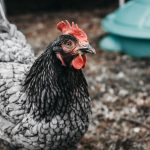Understanding dog behavior is essential for ensuring the safety of both dogs and humans. Dogs are social animals whose behavior is influenced by genetics, environment, and past experiences. Each dog has a unique personality and temperament, with some being more aggressive or fearful, while others are more sociable.
Observing a dog’s body language, vocalizations, and overall demeanor helps identify signs of stress, fear, or aggression. This allows for appropriate measures to address any issues. Breed-specific traits also provide insight into behavior, as different breeds have been selectively bred for specific purposes like herding, guarding, or hunting.
Socialization, training, and environmental factors significantly impact a dog’s behavior. Well-socialized and properly trained dogs are more likely to exhibit well-adjusted behavior, while those with poor socialization or past trauma may display fear-based aggression. Understanding breed-specific traits helps anticipate and manage behavior.
For example, herding breeds may exhibit nipping or chasing behaviors, while guarding breeds may be more protective and territorial. Comprehending dog behavior requires a combination of observation, knowledge of breed-specific traits, and awareness of socialization and training impacts. This understanding is crucial for promoting the well-being of dogs and ensuring the safety of those around them.
Table of Contents
- 1 Secure Enclosures
- 2 Training and Socialization
- 3 Supervision and Monitoring
- 4 Providing Adequate Exercise and Mental Stimulation
- 5 Using Deterrents
- 6 Seeking Professional Help
- 7 FAQs
- 7.1 What are some ways to keep my dog from eating my chickens?
- 7.2 Why do dogs eat chickens?
- 7.3 How can I train my dog to leave the chickens alone?
- 7.4 What are some signs that my dog may be a threat to my chickens?
- 7.5 Are there any specific dog breeds that are more prone to chasing or eating chickens?
Key Takeaways
- Understanding the behavior of your pet is crucial in providing proper care and training.
- Secure enclosures are essential to keep your pet safe and prevent them from escaping or getting into dangerous situations.
- Training and socialization are important for your pet’s well-being and to ensure they are well-behaved around people and other animals.
- Supervision and monitoring are necessary to prevent any potential accidents or conflicts with other pets or people.
- Providing adequate exercise and mental stimulation is key to keeping your pet healthy and happy.
- Using deterrents can help in training your pet and preventing unwanted behaviors.
- Seeking professional help from a trainer or behaviorist can provide valuable guidance in addressing any behavioral issues your pet may have.
Secure Enclosures
Designing a Secure Enclosure
When creating a secure enclosure for your dog, it’s essential to consider the size and strength of your dog, as well as any potential escape routes. The enclosure should be tall enough to prevent jumping or climbing over, and the fencing should be sturdy enough to withstand any attempts to break through.
Maintenance and Inspection
Regular inspection of the enclosure is vital to ensure its security. Look for any signs of wear or damage that could compromise the enclosure’s integrity. Additionally, providing adequate shelter within the enclosure is important to protect your dog from the elements. This could include a dog house or sheltered area where they can seek refuge from extreme weather conditions.
Comfort and Entertainment
Providing access to food, water, and toys within the enclosure can help keep your dog comfortable and entertained. Overall, creating a secure enclosure for your dog involves careful consideration of their size and strength, as well as regular maintenance to ensure its security. By doing so, you can provide a safe and happy environment for your dog to thrive.

Training and socialization are essential components of responsible dog ownership that can help prevent aggressive behavior in dogs. Training provides dogs with the necessary skills to understand commands and respond appropriately to different situations. This can help prevent unwanted behaviors such as jumping on people, pulling on the leash, or exhibiting aggression towards other dogs or people.
Positive reinforcement training methods are highly effective in teaching dogs desired behaviors while strengthening the bond between the owner and the dog. Socialization is equally important in shaping a dog’s behavior and preventing aggression. Exposing dogs to various environments, people, animals, and experiences at an early age can help them become well-adjusted and confident adults.
Proper socialization can reduce fear-based aggression and help dogs feel more comfortable in different situations. It’s important to introduce dogs to new experiences gradually and in a positive manner to prevent them from developing fear or anxiety towards unfamiliar stimuli. In addition to basic obedience training and socialization, it’s important for owners to understand their dog’s body language and signals to prevent potential aggressive outbursts.
Recognizing signs of stress or discomfort in dogs can help owners intervene before a situation escalates into aggression. Overall, training and socialization are crucial in preventing aggressive behavior in dogs and promoting positive interactions with people and other animals. Training and socialization are essential components of responsible dog ownership that can help prevent aggressive behavior in dogs.
Training provides dogs with the necessary skills to understand commands and respond appropriately to different situations. This can help prevent unwanted behaviors such as jumping on people, pulling on the leash, or exhibiting aggression towards other dogs or people. Positive reinforcement training methods are highly effective in teaching dogs desired behaviors while strengthening the bond between the owner and the dog.
Socialization is equally important in shaping a dog’s behavior and preventing aggression. Exposing dogs to various environments, people, animals, and experiences at an early age can help them become well-adjusted and confident adults. Proper socialization can reduce fear-based aggression and help dogs feel more comfortable in different situations.
It’s important to introduce dogs to new experiences gradually and in a positive manner to prevent them from developing fear or anxiety towards unfamiliar stimuli. In addition to basic obedience training and socialization, it’s important for owners to understand their dog’s body language and signals to prevent potential aggressive outbursts. Recognizing signs of stress or discomfort in dogs can help owners intervene before a situation escalates into aggression.
Overall, training and socialization are crucial in preventing aggressive behavior in dogs and promoting positive interactions with people and other animals.
Supervision and Monitoring
Supervision and monitoring are key aspects of responsible dog ownership that can help prevent aggressive behavior in dogs. It’s important for owners to closely supervise their dogs when they are interacting with other animals or people to ensure everyone’s safety. This is particularly important when introducing a new dog into a household with existing pets or when introducing a dog to unfamiliar people or environments.
Additionally, monitoring a dog’s behavior for any signs of stress or discomfort can help prevent potential aggressive outbursts. Dogs may exhibit subtle body language cues such as lip licking, yawning, or stiffening when they are feeling anxious or threatened. Recognizing these signals can help owners intervene before a situation escalates into aggression.
Furthermore, it’s important for owners to be aware of any triggers that may cause their dog to become aggressive. This could include specific situations, environments, or interactions with certain people or animals. By identifying these triggers, owners can take proactive measures to avoid potential conflicts and keep their dog out of stressful situations.
Overall, supervision and monitoring are essential in preventing aggressive behavior in dogs by allowing owners to intervene before a situation escalates into aggression. Supervision and monitoring are key aspects of responsible dog ownership that can help prevent aggressive behavior in dogs. It’s important for owners to closely supervise their dogs when they are interacting with other animals or people to ensure everyone’s safety.
This is particularly important when introducing a new dog into a household with existing pets or when introducing a dog to unfamiliar people or environments. Additionally, monitoring a dog’s behavior for any signs of stress or discomfort can help prevent potential aggressive outbursts. Dogs may exhibit subtle body language cues such as lip licking, yawning, or stiffening when they are feeling anxious or threatened.
Recognizing these signals can help owners intervene before a situation escalates into aggression. Furthermore, it’s important for owners to be aware of any triggers that may cause their dog to become aggressive. This could include specific situations, environments, or interactions with certain people or animals.
By identifying these triggers, owners can take proactive measures to avoid potential conflicts and keep their dog out of stressful situations. Overall, supervision and monitoring are essential in preventing aggressive behavior in dogs by allowing owners to intervene before a situation escalates into aggression.
Providing Adequate Exercise and Mental Stimulation
Providing adequate exercise and mental stimulation is essential for preventing aggressive behavior in dogs. Regular physical exercise helps dogs release pent-up energy and reduces boredom, which can contribute to behavioral issues such as destructiveness or aggression. Daily walks, playtime, and interactive toys are great ways to keep dogs physically active and mentally engaged.
In addition to physical exercise, mental stimulation is equally important in preventing aggressive behavior in dogs. Engaging activities such as puzzle toys, obedience training sessions, or scent work can help keep dogs mentally sharp and prevent boredom-related behavioral problems. Furthermore, providing opportunities for social interaction with other dogs can also help prevent aggression by allowing dogs to learn appropriate social skills and communication cues.
Overall, providing adequate exercise and mental stimulation is crucial in preventing aggressive behavior in dogs by keeping them physically fit and mentally engaged. Providing adequate exercise and mental stimulation is essential for preventing aggressive behavior in dogs. Regular physical exercise helps dogs release pent-up energy and reduces boredom, which can contribute to behavioral issues such as destructiveness or aggression.
Daily walks, playtime, and interactive toys are great ways to keep dogs physically active and mentally engaged. In addition to physical exercise, mental stimulation is equally important in preventing aggressive behavior in dogs. Engaging activities such as puzzle toys, obedience training sessions, or scent work can help keep dogs mentally sharp and prevent boredom-related behavioral problems.
Furthermore, providing opportunities for social interaction with other dogs can also help prevent aggression by allowing dogs to learn appropriate social skills and communication cues. Overall, providing adequate exercise and mental stimulation is crucial in preventing aggressive behavior in dogs by keeping them physically fit and mentally engaged.
Using Deterrents

How Deterrents Work
Deterrents such as citronella sprays or ultrasonic devices can be used to interrupt aggressive behaviors such as barking or lunging towards other animals or people. These deterrents work by creating an unpleasant sensation that distracts the dog from the triggering stimulus.
Combining Deterrents with Positive Reinforcement
Additionally, using positive reinforcement techniques such as rewarding calm behavior can also help deter aggressive tendencies in dogs by promoting desirable behaviors. It’s important for owners to use deterrents responsibly and consistently to effectively modify their dog’s behavior without causing fear or anxiety.
Effective Use of Deterrents
Overall, using deterrents can be an effective tool in preventing aggressive behavior in dogs by discouraging unwanted behaviors through positive reinforcement techniques. By using deterrents in a responsible and consistent manner, dog owners can promote a more positive and calm behavior in their pets.
Seeking Professional Help
Seeking professional help is crucial when dealing with aggressive behavior in dogs that cannot be effectively managed through training or environmental modifications alone. A qualified professional such as a certified dog trainer or veterinary behaviorist can provide valuable guidance on how to address underlying issues contributing to the aggression. Professional help may involve conducting a thorough assessment of the dog’s behavior to identify triggers for aggression and develop a tailored behavior modification plan.
This plan may include desensitization exercises, counter-conditioning techniques, or medication if necessary. Additionally, seeking professional help can provide owners with the necessary support and resources to effectively manage their dog’s aggressive behavior while ensuring their safety and well-being. Overall, seeking professional help is essential when dealing with aggressive behavior in dogs that requires specialized expertise beyond what owners can provide on their own.
Seeking professional help is crucial when dealing with aggressive behavior in dogs that cannot be effectively managed through training or environmental modifications alone. A qualified professional such as a certified dog trainer or veterinary behaviorist can provide valuable guidance on how to address underlying issues contributing to the aggression. Professional help may involve conducting a thorough assessment of the dog’s behavior to identify triggers for aggression and develop a tailored behavior modification plan.
This plan may include desensitization exercises, counter-conditioning techniques, or medication if necessary. Additionally, seeking professional help can provide owners with the necessary support and resources to effectively manage their dog’s aggressive behavior while ensuring their safety and well-being. Overall, seeking professional help is essential when dealing with aggressive behavior in dogs that requires specialized expertise beyond what owners can provide on their own.
If you’re struggling to keep your dog from eating your chickens, you may want to consider upgrading your chicken coop to ensure the safety of your flock. Poultry Wizard offers a helpful article on Producers Pride Sentinel Chicken Coop that provides tips and recommendations for a secure and predator-proof coop. By implementing these strategies, you can create a safe environment for your chickens and prevent your dog from causing harm.
FAQs
What are some ways to keep my dog from eating my chickens?
Some ways to keep your dog from eating your chickens include training your dog to leave the chickens alone, providing enough exercise and mental stimulation for your dog, and using barriers or fencing to separate the dog from the chickens.
Why do dogs eat chickens?
Dogs may eat chickens due to their natural prey drive, lack of training, boredom, or hunger. It is important to address the underlying reasons for the behavior in order to prevent it from happening.
How can I train my dog to leave the chickens alone?
Training your dog to leave the chickens alone involves positive reinforcement, consistent training, and supervision. Using commands such as “leave it” and rewarding your dog for good behavior can help in training them to leave the chickens alone.
What are some signs that my dog may be a threat to my chickens?
Signs that your dog may be a threat to your chickens include chasing, stalking, or showing excessive interest in the chickens, as well as displaying predatory behavior such as growling or lunging towards the chickens.
Are there any specific dog breeds that are more prone to chasing or eating chickens?
Some dog breeds, such as terriers and hounds, are known for their strong prey drive and may be more prone to chasing or eating chickens. However, any dog can exhibit this behavior, regardless of breed.
Meet Walter, the feathered-friend fanatic of Florida! Nestled in the sunshine state, Walter struts through life with his feathered companions, clucking his way to happiness. With a coop that’s fancier than a five-star hotel, he’s the Don Juan of the chicken world. When he’s not teaching his hens to do the cha-cha, you’ll find him in a heated debate with his prized rooster, Sir Clucks-a-Lot. Walter’s poultry passion is no yolk; he’s the sunny-side-up guy you never knew you needed in your flock of friends!








